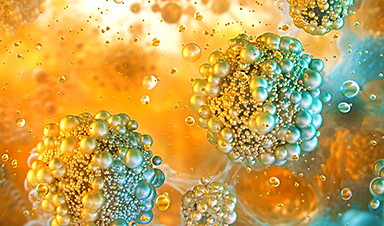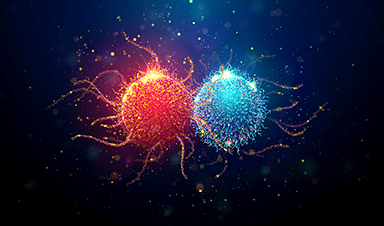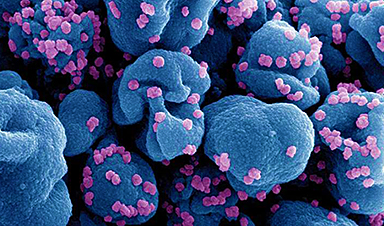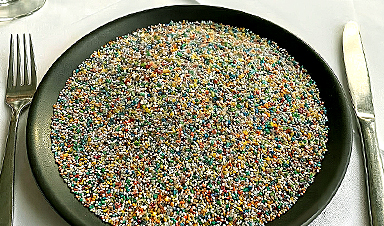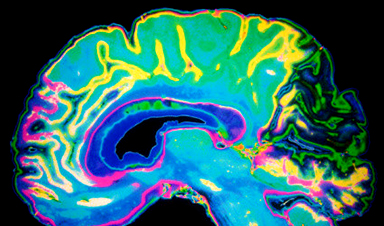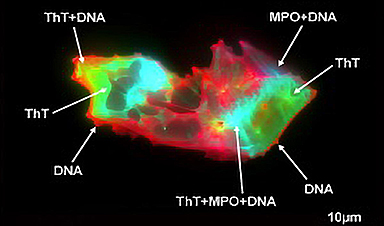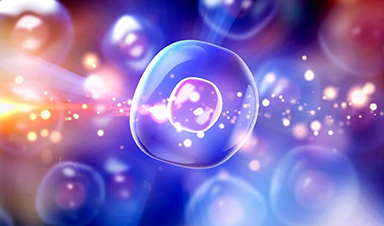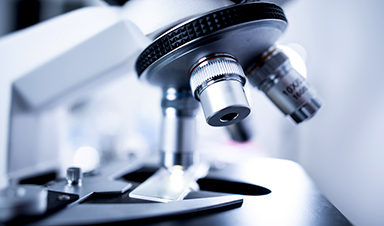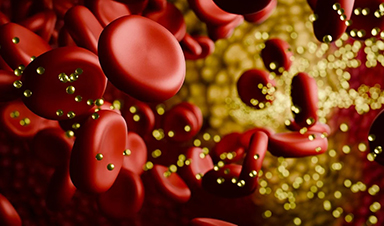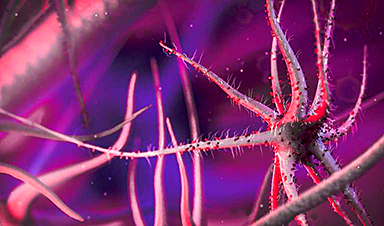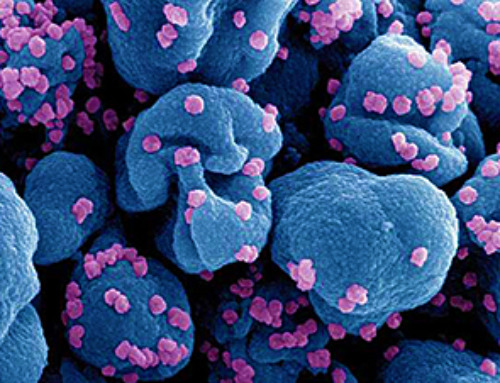Baylor researchers developed a reversible, non-hormonal male contraceptive targeting the sperm-specific protein STK33, showing effectiveness and safety in mice studies.
In the past six decades, the global population has surged more than 260%, and it shows no signs of slowing down. Estimates suggest that by 2037, Earth's population will climb from 8 billion in 2022 to 9 billion. This continued growth highlights the critical importance of family planning. Despite this need, there have been few significant advancements in contraceptive options recently, particularly for men, who still lack access to an oral contraceptive pill.
In a study published in the journal Science, researchers at Baylor College of Medicine and collaborating institutions show in animal models that a novel, non-hormonal sperm-specific approach offers a promising option for reversible human male contraception.
"Although researchers have been investigating several strategies to develop male contraceptives, we still do not have a birth control pill for men," said corresponding author Dr. Martin Matzuk, director of the Center for Drug Discovery and chair of the Department of Pathology and Immunology at Baylor. "In this study, we focused on a novel approach – identifying a small molecule that would inhibit serine/threonine kinase 33 (STK33), a protein that is specifically required for fertility in both men and mice."
Previous research has shown that STK33 is enriched in the testis and is specifically required for the formation of functional sperm. In mice, knocking out the Stk33 gene renders the mice sterile due to abnormal sperm and poor sperm motility. In men, having a mutation in the STK33 gene leads to infertility caused by the same sperm defects found in the Stk33 knockout mice. Most importantly, mice and men with these mutations have no other defects and even have normal testis size.
"STK33 is therefore considered a viable target with minimal safety concerns for contraception in men," said Matzuk, who has been on faculty at Baylor for 30 years and is Baylor's Stuart A. Wallace Chair and Robert L. Moody, Sr. Chair of Pathology and Immunology. "STK33 inhibitors have been described but none are STK33-specific or potent for chemically disrupting STK33 function in living organisms."
Finding an Effective STK33 inhibitor
"We used DNA-Encoded Chemistry Technology (DEC-Tec) to screen our multi-billion compound collection to discover potent STK33 inhibitors," said first author Dr. Angela Ku, staff scientist in the Matzuk lab. "Our group and others have used this approach before to uncover potent and selective kinase inhibitors."
The researchers uncovered potent STK33-specific inhibitors, from which they successfully generated modified versions to make them more stable, potent, and selective. "Among these modified versions, compound CDD-2807 turned out to be the most effective," Ku said.
"Next, we tested the efficacy of CDD-2807 in our mouse model," said co-author Dr. Courtney M. Sutton, a postdoctoral fellow in the Matzuk lab. "We evaluated several doses and treatment schedules and then determined sperm motility and number in the mice as well as their ability to fertilize females."
Compound CDD-2807 effectively crossed the blood-testis barrier and reduced sperm motility and numbers and mice fertility at low doses. "We were pleased to see that the mice did not show signs of toxicity from CDD-2807 treatment, that the compound did not accumulate in the brain, and that the treatment did not alter testis size, similar to the Stk33 knockout mice and the men with the STK33 mutation," Sutton said. "Importantly, the contraceptive effect was reversible. After a period without compound CDD-2807, the mice recovered sperm motility and numbers and were fertile again."
"In our paper, we also present the first crystal structure for STK33," said co-author Dr. Choel Kim, associate professor of biochemistry and molecular pharmacology and member of the Dan L Duncan Comprehensive Cancer Center at Baylor. "Our crystal structure showed how one of our potent inhibitors interacts with STK33 kinase in three dimensions. This enabled us to model and design our final compound, CDD-2807, for better drug-like properties."
"This study was a tour de force by our team in the Center for Drug Discovery at Baylor and our collaborators," said co-author Dr. Mingxing Teng, assistant professor of pathology and immunology and of biochemistry and molecular pharmacology at Baylor. Teng also is a Cancer Prevention Research Institute of Texas Scholar and a member of the Dan L Duncan Comprehensive Cancer Center at Baylor. "Starting with a genetically validated contraceptive target, we were able to show that STK33 is also a chemically validated contraceptive target."
"In the next few years, our goal is to further evaluate this STK33 inhibitor and compounds similar to CDD-2807 in primates to determine their effectiveness as reversible male contraceptives," Matzuk said.
Reference: "Reversible male contraception by targeted inhibition of serine/threonine kinase 33" by Angela F. Ku, Kiran L. Sharma, Hai Minh Ta, Courtney M. Sutton, Kurt M. Bohren, Yong Wang, Srinivas Chamakuri, Ruihong Chen, John M. Hakenjos, Ravikumar Jimmidi, Katarzyna Kent, Feng Li, Jian-Yuan Li, Lang Ma, Chandrashekhar Madasu, Murugesan Palaniappan, Stephen S. Palmer, Xuan Qin, Matthew B. Robers, Banumathi Sankaran, Zhi Tan, Yasmin M. Vasquez, Jian Wang, Jennifer Wilkinson, Zhifeng Yu, Qiuji Ye, Damian W. Young, Mingxing Teng, Choel Kim and Martin M. Matzuk, 23 May 2024, Science.
DOI: 10.1126/science.adl2688
News
Platelet-inspired nanoparticles could improve treatment of inflammatory diseases
Scientists have developed platelet-inspired nanoparticles that deliver anti-inflammatory drugs directly to brain-computer interface implants, doubling their effectiveness. Scientists have found a way to improve the performance of brain-computer interface (BCI) electrodes by delivering anti-inflammatory drugs directly [...]
After 150 years, a new chapter in cancer therapy is finally beginning
For decades, researchers have been looking for ways to destroy cancer cells in a targeted manner without further weakening the body. But for many patients whose immune system is severely impaired by chemotherapy or radiation, [...]
Older chemical libraries show promise for fighting resistant strains of COVID-19 virus
SARS‑CoV‑2, the virus that causes COVID-19, continues to mutate, with some newer strains becoming less responsive to current antiviral treatments like Paxlovid. Now, University of California San Diego scientists and an international team of [...]
Lower doses of immunotherapy for skin cancer give better results, study suggests
According to a new study, lower doses of approved immunotherapy for malignant melanoma can give better results against tumors, while reducing side effects. This is reported by researchers at Karolinska Institutet in the Journal of the National [...]
Researchers highlight five pathways through which microplastics can harm the brain
Microplastics could be fueling neurodegenerative diseases like Alzheimer's and Parkinson's, with a new study highlighting five ways microplastics can trigger inflammation and damage in the brain. More than 57 million people live with dementia, [...]
Tiny Metal Nanodots Obliterate Cancer Cells While Largely Sparing Healthy Tissue
Scientists have developed tiny metal-oxide particles that push cancer cells past their stress limits while sparing healthy tissue. An international team led by RMIT University has developed tiny particles called nanodots, crafted from a metallic compound, [...]
Gold Nanoclusters Could Supercharge Quantum Computers
Researchers found that gold “super atoms” can behave like the atoms in top-tier quantum systems—only far easier to scale. These tiny clusters can be customized at the molecular level, offering a powerful, tunable foundation [...]
A single shot of HPV vaccine may be enough to fight cervical cancer, study finds
WASHINGTON -- A single HPV vaccination appears just as effective as two doses at preventing the viral infection that causes cervical cancer, researchers reported Wednesday. HPV, or human papillomavirus, is very common and spread [...]
New technique overcomes technological barrier in 3D brain imaging
Scientists at the Swiss Light Source SLS have succeeded in mapping a piece of brain tissue in 3D at unprecedented resolution using X-rays, non-destructively. The breakthrough overcomes a long-standing technological barrier that had limited [...]
Scientists Uncover Hidden Blood Pattern in Long COVID
Researchers found persistent microclot and NET structures in Long COVID blood that may explain long-lasting symptoms. Researchers examining Long COVID have identified a structural connection between circulating microclots and neutrophil extracellular traps (NETs). The [...]
This Cellular Trick Helps Cancer Spread, but Could Also Stop It
Groups of normal cbiells can sense far into their surroundings, helping explain cancer cell migration. Understanding this ability could lead to new ways to limit tumor spread. The tale of the princess and the [...]
New mRNA therapy targets drug-resistant pneumonia
Bacteria that multiply on surfaces are a major headache in health care when they gain a foothold on, for example, implants or in catheters. Researchers at Chalmers University of Technology in Sweden have found [...]
Current Heart Health Guidelines Are Failing To Catch a Deadly Genetic Killer
New research reveals that standard screening misses most people with a common inherited cholesterol disorder. A Mayo Clinic study reports that current genetic screening guidelines overlook most people who have familial hypercholesterolemia, an inherited disorder that [...]
Scientists Identify the Evolutionary “Purpose” of Consciousness
Summary: Researchers at Ruhr University Bochum explore why consciousness evolved and why different species developed it in distinct ways. By comparing humans with birds, they show that complex awareness may arise through different neural architectures yet [...]
Novel mRNA therapy curbs antibiotic-resistant infections in preclinical lung models
Researchers at the Icahn School of Medicine at Mount Sinai and collaborators have reported early success with a novel mRNA-based therapy designed to combat antibiotic-resistant bacteria. The findings, published in Nature Biotechnology, show that in [...]
New skin-permeable polymer delivers insulin without needles
A breakthrough zwitterionic polymer slips through the skin’s toughest barriers, carrying insulin deep into tissue and normalizing blood sugar, offering patients a painless alternative to daily injections. A recent study published in the journal Nature examines [...]

